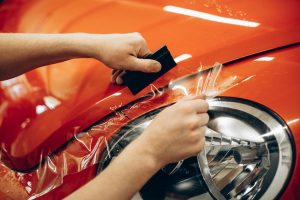
The Impact of Driving Habits in Vehicle Longevity
While regular maintenance prevents mechanical breakdowns and increases car longevity (a proven fact known to nearly all vehicle owners), the same driver’s habits determine the lifespan of the car.
In response, Pearson Automotive offered some smart advice to vehicle owners on how they can understand how their driving style is affecting their cars and what they can do about it to limit wear and tear.
Aggressive Acceleration and Sudden Braking
- Sudden acceleration and braking would leads to increased the stress on the engine, which indicates burning more fuel, thus increases the costs and shorten the life span of critical components. The best way to drive is that to suit the performance ability of your vehicle, slows down you are better to lower the consumption, longer the life span of components, hence the life span.
Although sudden stops are at times unavoidable, excessive braking causes tires to wear out more quickly, while over-revving the engine puts unnecessary strain on transmission and engine components, reducing their lifespan considerably. By training drivers to accelerate and brake more safely, you will reduce wear and stress on their vehicles, saving them both money and helping to look after our planet in the process.
Overfilling the Gas Tank
Sure, overfilling the tank doesn’t seem so bad, at first. But gas welcomes any opportunity to ruin your car. It can play havoc with your vehicle’s evaporative emissions system, which could lead to your car to fail the engine or illuminate a check engine light on the dashboard; overfilling can likewise cause problems with charcoal canisters, carbon filters or purge valves.
An overfilled tank can lead to a fuel spill, which can pollute your soil and water supply. Furthermore, if any gasoline spills out, it can suppress your brake booster by lowering your vacuum pressure, making it harder to press your brakes or making your car otherwise unsafe.
Shorting your tank not only adds a hefty expense into your trip but also slashes the lifespan of the tank considerably. Filler-neck of a typical automobile fuel tank. Photo by Fibonacci Blue.Only enough fuel must enter your tank that the nozzle auto-clicks off at the station. When an overfill does occur, you have to wait for a few minutes when stationary after filling up for as much fuel as possible to evaporate or flow down the filler neck and out of the tank before igniting the engine.
Excessive Weight
That means your car will live half as long subject to loads that exceed its manufacturer-specified weight limits. Brakes, suspension system and drivetrain components will wear out sooner. As those components wear out, they’ll put additional strain on other parts; it’s a cascade. Weight has a measurable negative impact on drivability. That’s why it’s important to obey manufacturers’ load limits, not pile seven people into a two-seater, and balance cars’ weight between front and rear to maximise driving pleasure and longevity. Driving is delightful when you know that every good habit you cultivate will not only lengthen the life of your car, but also moreso. A nagging doubt will never again dog your every driving decision – not if you follow these cutting-edge tips for maximising your driving enjoyment and efficiency: they’ll save time and money.
Driving in Unfavorable Conditions
As everyday experience also shows, any car can suffer premature wear and shortened life due to mistakes such as driving through difficult weather or taking shortcuts that violate vehicle specifications, such as using the wrong type of fuel or driving off-road. All of these can be avoided simply by following the manufacturer’s recommendations and using new, remanufactured parts to repair or replace damaged components.
Too many stop and starts, on the other hand, will wear out the pads on your brakes and cause your transmission to strain; excessive speed will put strain on your engine and drivetrain.
Aspiring drivers should use consistent training and continuous monitoring to overcome poor driving habits and assure road safety to themselves and other motorists on road. Fleet managers should also take advantage of technological and incentive availabilities to change driver behavior for assuring longer vehicle life and better driving conditions at large.



